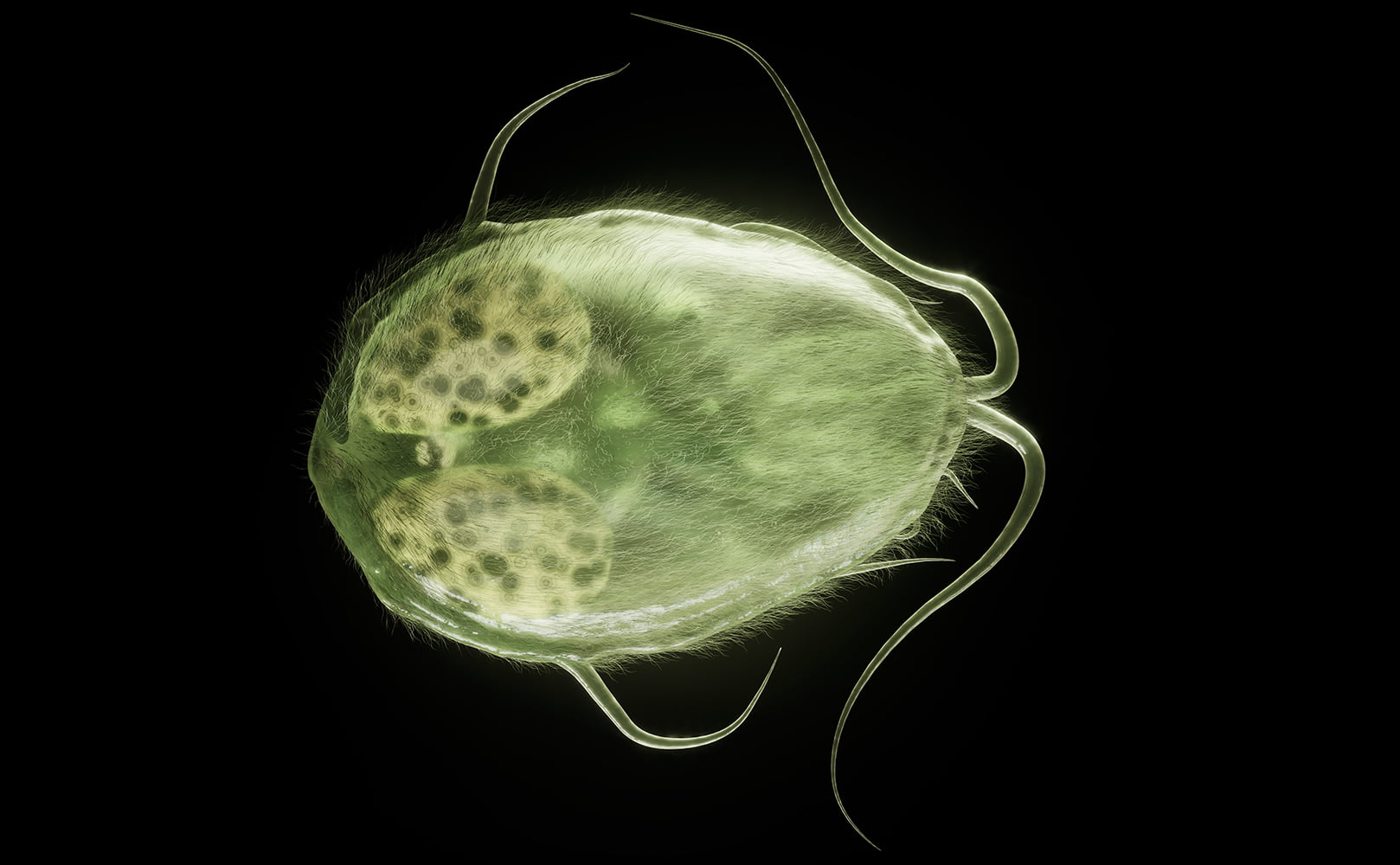How to Use Ultraviolet Light Treatment to Purify Water?
Written by: Gene Fitzgerald // Last Updated: Dec 14 2022
This page may contain affiliate links. If you buy a product or service through such a link we earn a commission at no extra cost to you. Learn more.
UV light for general disinfection is becoming increasingly popular. There are UV sterilization kits in hairdressers and beauty salons, and UV sterilization boxes for your cell phone.
And now you can even use ultraviolet light to purify water. But how exactly do you do that?
We are going to run you through the basics of how UV water purification works, and how you can set up and maintain one in your home.
Key Takeaways
- Ultraviolet radiation (UV) type C is used in a UV water purifier to kill up to 99.9999% of harmful microorganisms.
- Most UV water purifiers attach directly to the home plumbing system. As water passes through them, any germs are exposed to ultraviolet light and thus killed.
- UV water purifiers do not function effectively if the water does not first meet certain conditions – think sediments and other impurities. Pre-filters may be required.
- UV purifier maintenance is simple, and can usually be done by yourself at home.
What Is UV Light?
Ultraviolet light is a form of radiation that comes from the sun, as well as artificial sources like UV lamps. UV light has three types, UV-A, UV-B, and UV-C. Shortwave UV-C is used in UV water disinfection, as it is germicidal. When used correctly, UV light is capable of disinfecting a water source with a 99.9999% rate of effectiveness.
How to Purify Water with Ultraviolet Light
When water is exposed to UV light, provided it is done under the right conditions, it is deadly to most organisms. Exposure to the rays destroys DNA cells, preventing an organism from replicating and causing diseases.
This requires short exposure to UV light to be emitted at a wavelength of 254nm. To do this, there cannot be any particulate in the water, as it can reduce the effectiveness of the UV light.
A UV water purification unit is attached to the household plumbing as the final step in disinfection. Water passes through the unit, and is exposed to the UV lamp inside, killing the microorganisms before the sanitized water comes out of your faucet.
Does UV Light Disinfection Work in All Water Conditions?
UV water purifiers need clear water in order to function effectively. This means that there can be no particulate floating around in the source water. It also works best with water that has low hardness. This is why a UV purifier is usually recommended for use with a pre-filter for a couple of reasons,
- To remove physical particles from the water that affect the ability of the light to target germs.
- To prolong the life of the UV system by reducing the amount of maintenance it needs.
Before using your water purifier, have your water tested to see if it meets the following requirements, so you can determine which pre-filters or treatments you may need :
- Hardness < 7 grains per gallon
- Iron < 0.3 parts per million
- Manganese < 0.05 parts per million
- Turbidity < 1 nephelometric turbidity units
- Tannins < 0.1 parts per million
UV Water Purifier Maintenance
UV water purifiers are very easy to maintain, especially compared to other water filters and treatment systems. All you will really need to do is replace the UV bulb every year, clean the quartz glass sleeve every year, and replace the quartz glass sleeve every 2 years.
A UV bulb works for around 375 days, after which its effectiveness can have dropped by more than 60%. This is an issue, as you may not know that your water is not being properly sanitized until you get sick. And it’s why it’s important to stick to the maintenance schedule, even if you think your UV light bulb is still working.
How to Replace a UV Lamp
- Turn off your water supply.
- Remove the protective cap at the top of your UV water purifier.
- Unplug the filter from its power supply. You may hear an alarm indicating that the power is off.
- Check if the unit is cool enough to touch. If so, open the reactor chamber and unscrew the old lamp.
- Insert the new bulb, and make sure to use gloves so your fingers do not damage the lamp or quartz sleeve.
- Check for leaks by turning the water supply back on and visually inspecting. If there are none, close the cap and plug the filter back in.
- Reset your UV system alarm for the next UV lamp change.
Clean the UV Quartz Sleeve Annually and Replace Yearly
The UV quartz sleeve should be cleaned every year, and replaced every 2 years. You will need a soft cloth, gloves, and a mildly acidic cleaner.
- Turn the filter off, and unplug it.
- Remove the sleeve very carefully.
- Dip the cloth into the cleaner and gently wipe.
- Fit the new UV bulb, as you will be replacing that when you clean the quartz sleeve.
If you need to replace the quartz sleeve instead of cleaning it:
- Switch off your water supply, and unplug your ultraviolet purifier.
- Remove the sleeve from the chamber.
- Slide the new sleeve into place and fit the UV bulb.
It is also important to note that maintenance means making sure your pre-filters are also well-maintained and working effectively. If the source water is not being filtered adequately, it can mean more frequent maintenance for your UV purification system.
Pros & Cons of UV Water Treatment
Pros
- If the water meets the right conditions, the rate of effectiveness is 99.9999%, making it arguably the most effective water disinfection method available.
- It is a chemical-free process.
- It does not leave any strange odor or taste in the water and does not affect the composition of the water.
- It is extremely energy efficient, with the UV bulb output being around the same as a regular household electric bulb.
- Maintenance is inexpensive compared to other filtration and disinfection methods.
- The process does not produce any waste or wastewater.
- Simple and easy to use.
- Will not damage your pipes as it doesn’t leave any chemical residue.
- Works almost instantly. The water does not have to sit in a container for a certain amount of time in order to disinfect.
- FDA approved.
Cons
- The system will inactivate microorganisms but does not remove them.
- Does not clean the water of anything, or remove suspended particles.
- Does not improve the taste, smell, or clarity of the water.
- Will not work without electricity, and will stop working completely if there is a power cut.
- Performance is affected if the water is not clean.
- May need to be maintained more frequently if used with hard water.
- The UV bulb may cause an increase in your water temperature on occasion.
- No ability to store larger amounts of disinfected water.
- Difficult to visually inspect if something is wrong, so the maintenance schedule needs to be adhered to.
What Microorganisms Does UV Disinfection Remove?
UV purifiers deactivate bacteria, viruses, cysts, fungi, and algae from water supplies, but they do not actually remove anything.
Contaminants such as sediment, chemicals, and heavy metals will remain in the water unless pre-filtration is used.
If you have any questions about the use of ultraviolet light in water treatment please don’t hesitate to leave a comment below!
Information provided on BOS is for educational purposes only. The products and services we review may not be right for your individual circumstances.
We adhere to strict editorial guidelines. Rest assured, the opinions expressed have not been provided, reviewed, or otherwise endorsed by our partners – they are unbiased, independent, and the author’s alone. Our licensed experts fact-check all content for accuracy. It is accurate as of the date posted and to the best of our knowledge.



